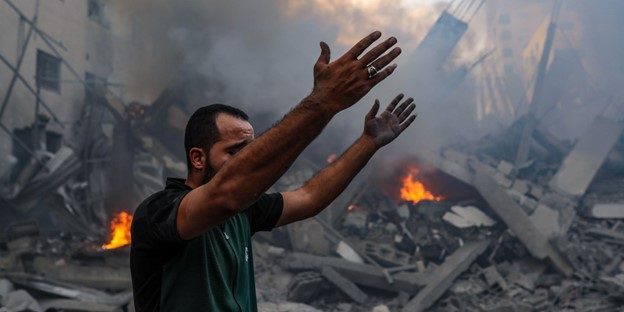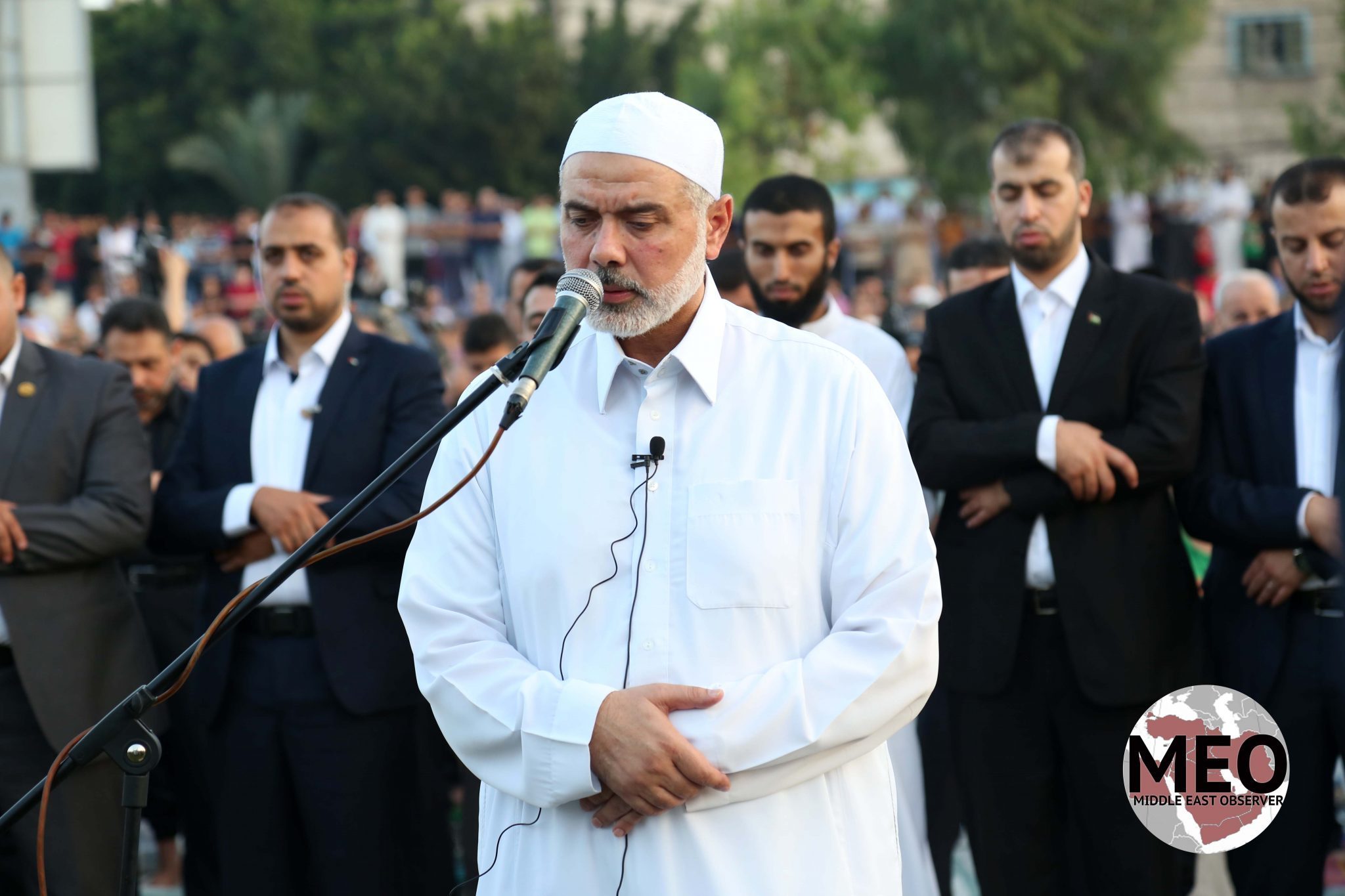
Israeli historian Raz Segal blasted Israel’s aggression against the people of Gaza on Saturday and said that it amounts to “incitement to genocide”, reported Anadolu Agency.
Segal told Breaking Points YouTube channel that the incitement is dealt with in Article 3 of the “The Convention on the Prevention and Punishment of the Crime of Genocide, or the Genocide Convention for short — an international agreement that criminalizes genocide and obligates countries to pursue the enforcement of its prohibition.
“Incitement to genocide, which usually happens actually in media discourses, but also in political discourses, sometimes in public spaces in various ways,” he said.
“Anyone who follows Hebrew language sources” would know about the “genocidal discourse” in Israeli media and outdoor signs as well.
“I’m talking about, you know, huge signs hanging on the bridges of the Tel Aviv Freeway right after the 7th of October, calling to flatten Gaza, to destroy Gaza, written on them directly that the ‘image of triumph would be zero people in Gaza.’ Very direct, very explicit,” he said, noting Hamas’ surprise attack that resulted in the flare-up of the current Israeli-Palestinian conflict.
“You don’t need a degree in comparative literature to interpret these signs and statements in the media discourse and in the political discourse in Israel after 7th of October. We see clear incitement to genocide, right? Clear, clear incitement to genocide.” Segal noted the Rwanda genocide as another example.
“One of the cases that comes close to this kind of society, immersed in a genocidal discourse, perhaps, is Rwanda and the Rwanda genocide in 1994,” he said. “We had journalists, radio channels, and people inciting for genocide for the murder of Tutsis in that case.”
“In the case of Rwanda, there was also a media case where journalists indeed stood trial and were convicted for incitement to genocide. So that’s another element that actually differentiates genocide from other crimes and international law,” he said.
“Incitement in Israel is clear, explicit, and unashamed. Just to give a recent example, journalist Zvi Yehezkeli on Channel 13 just openly and outright said that he thinks that at the beginning, Israel made a mistake because (its) attack on Gaza should have been much more actually violent and severe, and it should have killed 100,000 Palestinians right now,” said Segal.
“And the official response of Channel 13 was that ‘We’re just expressing the plurality of positions in Israeli society.’ So this is outright unashamed, right? It’s very common today in Israel, and it’s something I think we should all be paying attention to.”
Dire situation in Gaza
“It’s not just bullets and bombs. I have never seen health organizations as worried as they are about disease in Gaza, says Devi Sridhar
According to Devi Sridhar, chair of global public health at the University of Edinburgh, a quarter of the Gaza population could die within a year due to outbreaks of disease caused by this unprecedented conflict.
The Israel-Gaza war has set several world records. It’s the deadliest conflict for journalists in 30 years. It has caused the largest single loss of life for United Nations staff in the history of the organization.
It is set to have the worst ever total number of attacks on healthcare facilities and their personnel and has devastated schools, with 51% of education facilities damaged. International rules such as the Geneva conventions have not been respected: hospitals and ambulances have been targeted, medical relief organisations such as Doctors Without Borders (MSF) and Save the Children are under attack, and have lost staff members.
The Israel-Gaza war is also deadly for children, reportedly the deadliest conflict for children in recent times: roughly 160 children were being killed a day last month according to the World Health Organization.
Compare this with three a day in the recent conflict in Syria, two a day in Afghanistan, and 0.7 a day in Ukraine. The total number of children killed is already more than 5,300, says Unicef, the United Nations Children’s Fund. They didn’t choose to be born there and are innocent, but are bearing the brunt of these attacks.
Tragically, the nearly unprecedented death and injury we have seen so far is likely to only be the beginning. From looking at similar conflicts across the world, public health experts know that we are likely to see more children dying from preventable diseases than from bullets and bombs.
While the Israeli government has spoken about safe zones for families to flee to, these aren’t anywhere near what we would consider safe public health zones.
They don’t have clean water, functional sanitation and toilets, enough food, or trained medical staff with medicine and equipment. These are the basic needs that any human, especially babies and children, need to stay healthy and alive.
The WHO spokesperson Dr Margaret Harris has said that diarrhoea rates among children in refugee-like camps (sheltered housing) in Gaza were, in early November, already more than 100 times normal levels, and with no treatments available, children can become dehydrated and die quickly.
Diarrhoeal diseases are the second leading cause of death in children under five worldwide, and they are caused by contaminated water sources and lack of access to oral rehydration fluids. Upper respiratory infections, chickenpox, and painful skin conditions have also increased, and there are fears that the recent floods may result in untreated sewage mixing with fresh water used for drinking and cooking, and cause a cholera outbreak.
Disease has played a role in battle for centuries. During the American Civil War, two-thirds of the estimated deaths of soldiers were caused by pneumonia, typhoid, dysentery, and malaria. In 1994, two diseases, cholera and dysentery, linked to unclean water and conflict zones, killed more than 12,000 Rwandan refugees in only three weeks in June 1994.
An estimated 85% of Gaza’s inhabitants are already displaced according to the UN Relief and Works Agency. Experts analysing previous refugee displacements estimate in the Lancet that crude mortality rates (that is, deaths per 1,000 people) were more than 60 times higher than when each conflict began, on average.
Extrapolating this to the current situation in Gaza, where the crude death rate before the conflict was 3.82 in 2021 (relatively low because of its young demographic), mortality rates could reach 229.2 in 2024 if the conflict and displacement continue at the current level of intensity, and Gazans continue to lack access to sanitation, medical facilities and permanent housing.
Ultimately, unless something changes, the world faces the prospect of almost a quarter of Gaza’s 2 million population – close to half a million human beings – dying within a year. These would be largely deaths from preventable health causes and the collapse of the medical system. It’s a crude estimate, but one that is data-driven, using the terrifyingly real numbers of deaths in previous and comparable conflicts.
International organizations are trying to raise the alarm about this situation, with Harris lamenting: “It seems the world has lost its moral compass.”
Unicef has warned: “Lack of water, food, medicine, and protection is a bigger threat than bombs to the lives of thousands in Gaza.”



